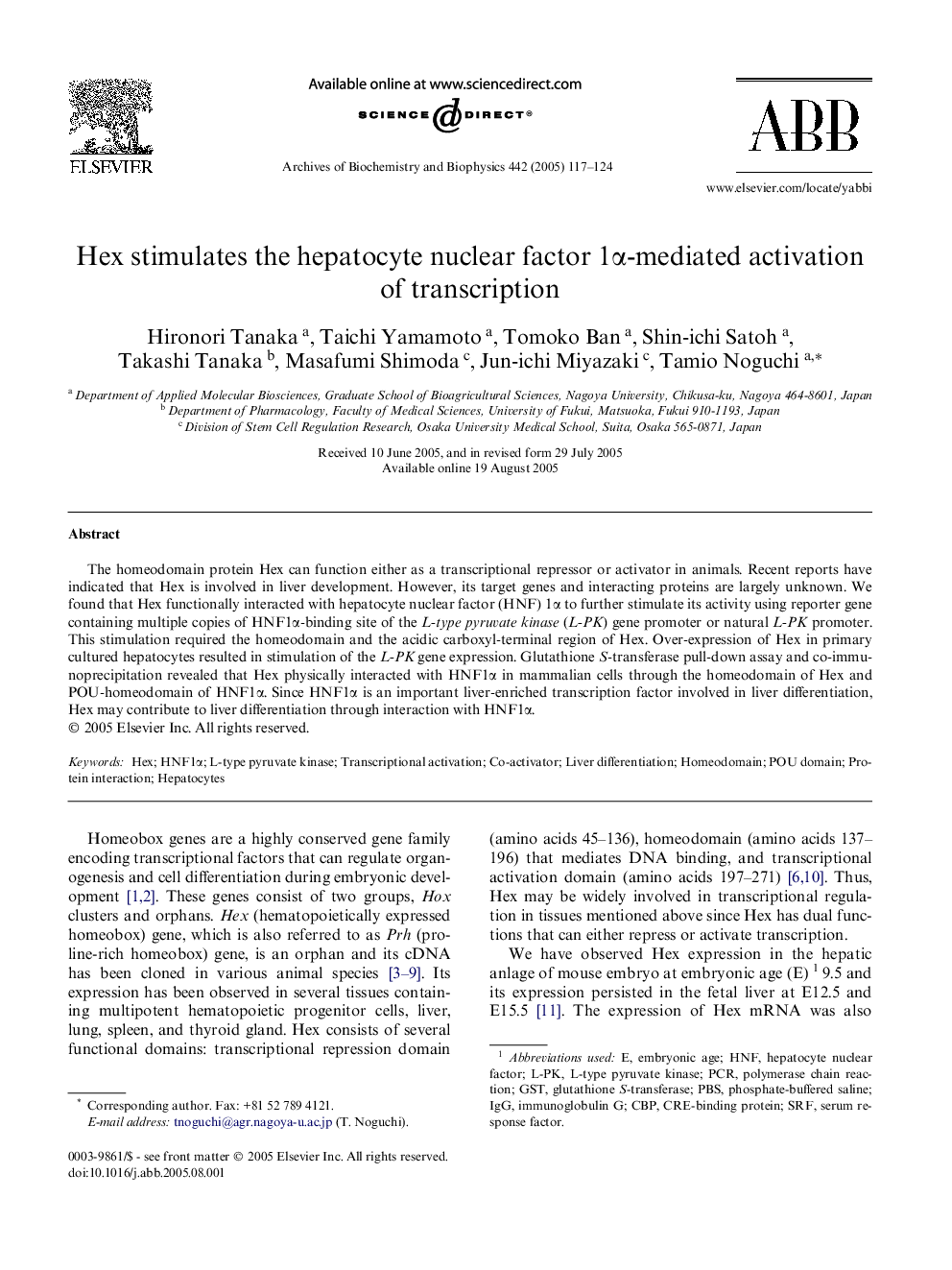| Article ID | Journal | Published Year | Pages | File Type |
|---|---|---|---|---|
| 9882115 | Archives of Biochemistry and Biophysics | 2005 | 8 Pages |
Abstract
The homeodomain protein Hex can function either as a transcriptional repressor or activator in animals. Recent reports have indicated that Hex is involved in liver development. However, its target genes and interacting proteins are largely unknown. We found that Hex functionally interacted with hepatocyte nuclear factor (HNF) 1α to further stimulate its activity using reporter gene containing multiple copies of HNF1α-binding site of the L-type pyruvate kinase (L-PK) gene promoter or natural L-PK promoter. This stimulation required the homeodomain and the acidic carboxyl-terminal region of Hex. Over-expression of Hex in primary cultured hepatocytes resulted in stimulation of the L-PK gene expression. Glutathione S-transferase pull-down assay and co-immunoprecipitation revealed that Hex physically interacted with HNF1α in mammalian cells through the homeodomain of Hex and POU-homeodomain of HNF1α. Since HNF1α is an important liver-enriched transcription factor involved in liver differentiation, Hex may contribute to liver differentiation through interaction with HNF1α.
Keywords
Related Topics
Life Sciences
Biochemistry, Genetics and Molecular Biology
Biochemistry
Authors
Hironori Tanaka, Taichi Yamamoto, Tomoko Ban, Shin-ichi Satoh, Takashi Tanaka, Masafumi Shimoda, Jun-ichi Miyazaki, Tamio Noguchi,
